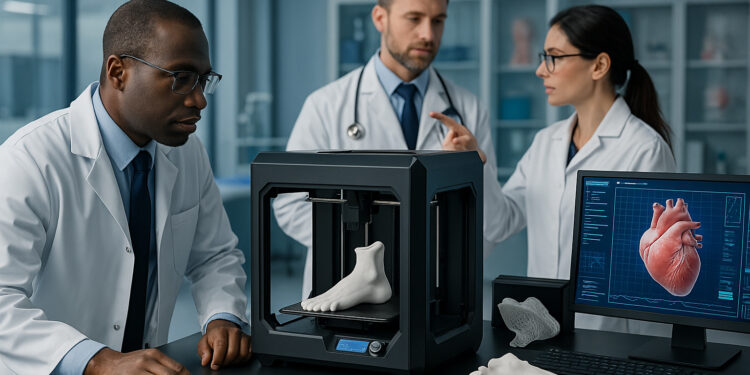Once a futuristic concept, 3D printing has now become a groundbreaking tool in modern medicine. From creating custom prosthetics to printing human tissue and even organs, this technology is transforming the way healthcare professionals approach treatment and innovation. It’s not just about convenience, it’s about personalization, precision, and accessibility in medicine.
Revolutionizing Prosthetics with Personalization
One of the earliest and most impactful uses of 3D printing in healthcare has been in prosthetics. Traditional prosthetics can be expensive and time-consuming to produce. With 3D printing, however, patients—especially children—can receive affordable, perfectly fitted prosthetics designed for comfort and functionality.
This technology allows doctors and engineers to customize prosthetics to match individual anatomy, enabling better mobility and reducing discomfort. Moreover, new materials such as lightweight polymers and biodegradable plastics make prosthetic devices more natural and durable.
Bioprinting: Printing the Building Blocks of Life
Perhaps the most exciting frontier in 3D printing is bioprinting—the process of printing human tissues and organs using living cells. Researchers are now developing skin grafts, cartilage, and even organ structures using bio-inks derived from a patient’s own cells.
While fully functional printed organs are still in development, the potential is staggering. Imagine reducing transplant waiting lists or eliminating the risk of organ rejection by creating organs that are genetically identical to the recipient.
Surgical Planning and Medical Education
3D printing also plays a crucial role in surgical preparation and training. Surgeons can now print accurate 3D models of a patient’s anatomy, allowing them to practice complex procedures before entering the operating room.
In medical schools, 3D-printed organs and body parts have become valuable teaching tools, replacing generic models and improving the realism of training. This results in more confident, skilled healthcare professionals and safer surgical outcomes.
Outlook: Accessibility and Ethical Challenges
As 3D printing becomes more affordable, even hospitals in low-resource settings can access customized medical tools and prosthetics. However, with innovation comes responsibility—ethical considerations such as patient data use, bioprinting regulation, and quality control will be critical to manage.
The integration of AI and 3D printing could soon automate design and fabrication, making healthcare more efficient and personalized than ever before.
Conclusion
3D printing is redefining the boundaries of what’s possible in medicine. From improving lives with prosthetics to paving the way for organ regeneration, it is transforming healthcare into a world where precision meets compassion. The future of medicine, it seems, is being printed—one layer at a time.












